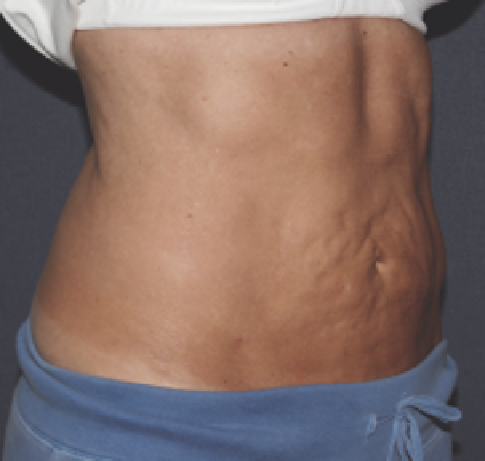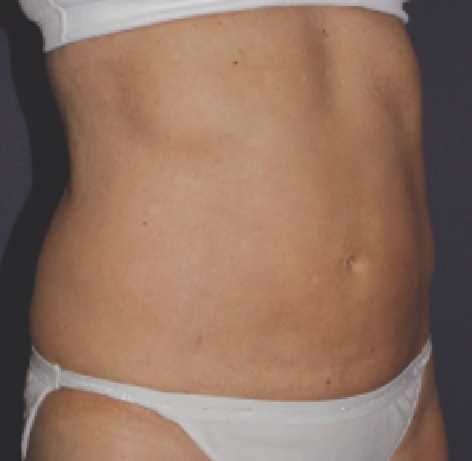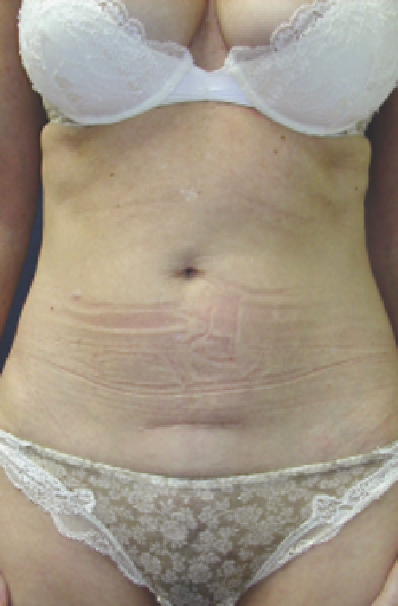Biomedical Engineering Reference
In-Depth Information
(
A
)
(
B
)
Figure 14.3
(
A
) Preoperative view of the abdomen in a 62-year-old woman with skin irregularities from previous liposculpture. (
B
) Six-month postoperative view
of the treatment area demonstrating improved skin irregularities and decreased skin fl accidity. CoolLipo system (1320 nm) was used at 15 W, 50 Hz, and 8602 J.
(
A
)
(
B
)
Figure 14.4
(
A
) Preoperative view of the abdomen in a 48-year-old woman. (
B
) One-year postoperative view of abdomen following laser lipolysis with the
CoolLipo system (1320 nm) at 10 W and 50 Hz. Improvement is also noted on the scar on the lower abdomen.
at equal power. The third study used the combined 1064/1320-
nm multiplex laser system at multiple sites. The end point of
laser treatment was determined by reaching an external skin
surface temperature of 40°C. In the fi rst study, no signifi cant
improvement over tumescent liposculpture alone was noted
using the 1064-nm laser. The second study showed no differ-
ence using the 1320- versus the 1064-nm LAL system. The
authors believe that the results found in the fi rst two studies
were likely secondary to suboptimal energies. Finally, the mul-
tiplex 1064/1320-nm system appeared to show better clinical
improvement in skin laxity and fat reduction, possibly due to
higher energies produced with the multiplex than either the
1064- or the 1320-nm 10-W system alone. Two of the 20
patients receiving treatment with the multiplex device sus-
tained thermal burns and in both cases intraoperative skin sur-
face temperatures exceeded 40°C.



















